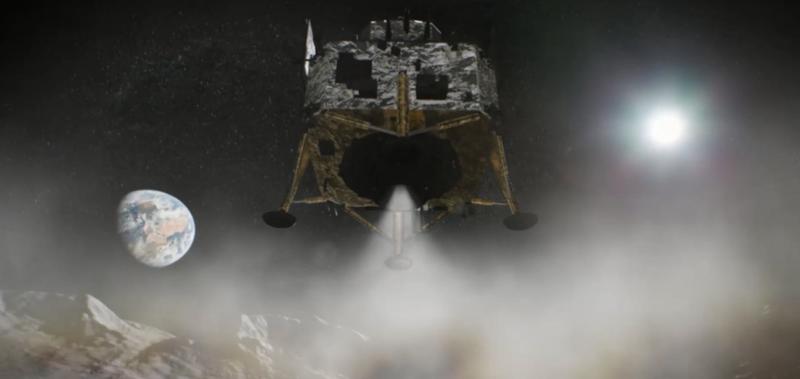 This undated photo shows an illustration of the landing process of China's Chang'e 5's lander-ascender combination. (PHOTO PROVIDED TO CHINA DAILY)
This undated photo shows an illustration of the landing process of China's Chang'e 5's lander-ascender combination. (PHOTO PROVIDED TO CHINA DAILY)
The selection of Chang'e 5's landing site near Mons Ruemker, an isolated volcanic formation located in the northwestern part of the moon's near side, was not made randomly but was based on a host of considerations, a project leader explained.
Pei Zhaoyu, spokesman for the Chang'e 5 mission, said that project planners considered scientific, technical and engineering factors when choosing an ideal landing site for the spacecraft.
The first determinant was related to the landing site's scientific value-the place should be unexplored by previous missions and its geological characteristics should be different from those of explored regions, thus helping scientist to deepen our knowledge of the histories of the moon and the solar system.
Pei Zhaoyu, Spokesman for Chang'e 5 mission
"The first determinant was related to the landing site's scientific value-the place should be unexplored by previous missions and its geological characteristics should be different from those of explored regions, thus helping scientist to deepen our knowledge of the histories of the moon and the solar system," he said.
ALSO READ: Chang'e 5 lands on moon, starts surface operations
Then planners would check whether the candidate sites are suitable in terms of technical and engineering capability, according to Pei, who is deputy director of the China National Space Administration's Lunar Exploration and Space Program Center.
"We must make sure that the place where the probe was expected to operate is safe for landing, sample-collection and launching operations," the spokesman said. "For instance, there should not be a lot of rocks pits that would be obstacles during landing. In addition, the area should be covered with sunlight and have a suitable temperature during the probe's surface operations."
READ MORE: Chang'e 5 launched to fetch moon samples
Pang Zhihao, a retired China Academy of Space Technology researcher, said, "You don't want your probe to land on rocky terrain because such places are very dangerous for landing. If the spacecraft hits a rock, it will be highly likely to be damaged or to be in an unfavorable position, which will fundamentally compromise the entire mission."
China's first lunar probe to touch down on the moon, Chang'e 3 landed in the Mare Imbrium, or Sea of Rains, a vast lava plain within the Imbrium basin.
Chang'e 4 landed on the Von Karman crater in the South Pole-Aitken basin of the moon's far side, realizing mankind's first close observation of the little known "dark side of the moon".


